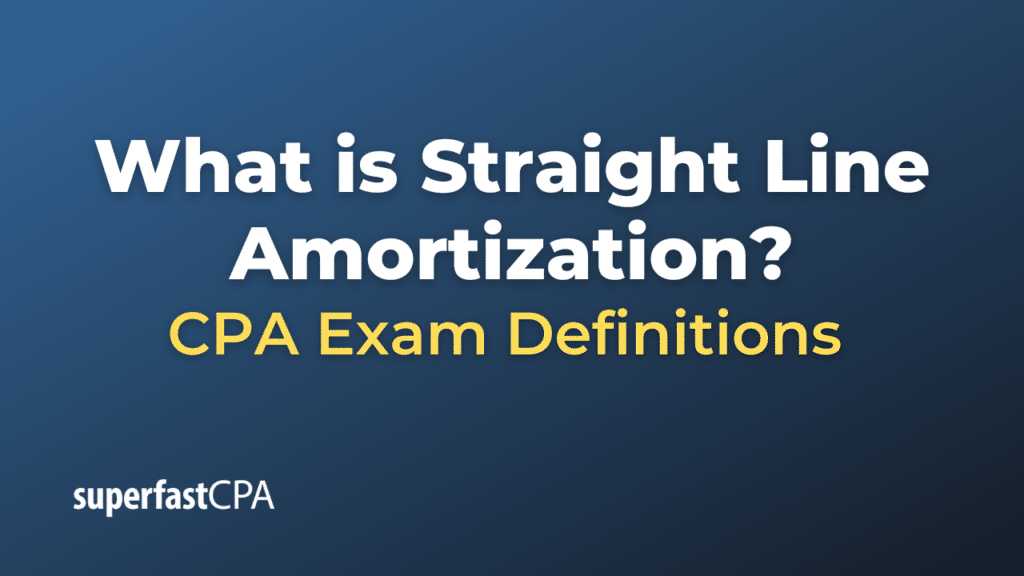Straight Line Amortization
Straight Line Amortization refers to the process of evenly distributing or expensing a certain amount over a set period. It is commonly used for intangible assets, such as patents or copyrights, and certain types of loans. With straight-line amortization, the same amount is expensed or paid off each period until the total amount is fully amortized or paid down.
For intangible assets, straight-line amortization results in the same expense amount being recognized in each period over the asset’s useful life. This is similar to the straight-line depreciation method used for tangible assets.
For loans, straight-line amortization means the borrower pays back an equal portion of the principal amount borrowed in each period, plus interest on the declining balance.
Here’s how to calculate straight-line amortization:
- For Intangible Assets:
AmortizationExpenseperPeriod = CostoftheAsset − ResidualValue / UsefulLifeinPeriods- Cost of the Asset: Original purchase price or value of the intangible asset.
- Residual Value: The value of the asset at the end of its useful life (often this is zero for intangible assets).
- Useful Life in Periods: The number of periods (usually years) over which the asset is expected to be used.
- For Loans:
PrincipalPaymentperPeriod = TotalPrincipal / NumberofPeriods
The interest payment would vary as the outstanding principal declines.
Example of Straight Line Amortization
Let’s delve deeper into an example involving the straight-line amortization of an intangible asset and then an example of a loan.
1. Intangible Asset: Trademark
XYZ Corporation purchases a trademark for its brand for $150,000. The trademark is expected to have a useful life of 15 years, after which it might be renewed or might become obsolete. XYZ Corporation decides to use straight-line amortization.
Calculation:
Amortization Expense per Year = CostoftheTrademark / UsefulLifeinYears
Amortization Expense per Year = $150,000 / 15 = $10,000
For each of the 15 years, XYZ Corporation would record an amortization expense of $10,000 for this trademark on its income statement. This reduces the asset’s carrying amount on the balance sheet by $10,000 each year.
2. Loan: Personal Loan
John takes out a personal loan of $6,000 to fund his higher education, at a 4% annual interest rate. The bank and John agree on straight-line amortization over a period of 3 years.
Calculation:
Principal Payment per Year = TotalPrincipal / NumberofYears
Principal Payment per Year = $6,000 / 3 = $2,000
For the first year:
- Interest = 4% of $6,000 = $240
- Total Payment for the Year = Principal + Interest = $2,000 + $240 = $2,240
For the second year (after paying $2,000 in the first year, the outstanding principal is $4,000):
- Interest = 4% of $4,000 = $160
- Total Payment for the Year = $2,000 + $160 = $2,160
For the third year (after paying another $2,000 in the second year, the outstanding principal is $2,000):
- Interest = 4% of $2,000 = $80
- Total Payment for the Year = $2,000 + $80 = $2,080
By the end of the third year, John has completely repaid his loan.
These examples showcase how straight-line amortization works for both intangible assets and loans. The amount amortized or repaid remains constant, but for loans, the interest portion decreases as the outstanding principal amount reduces.













